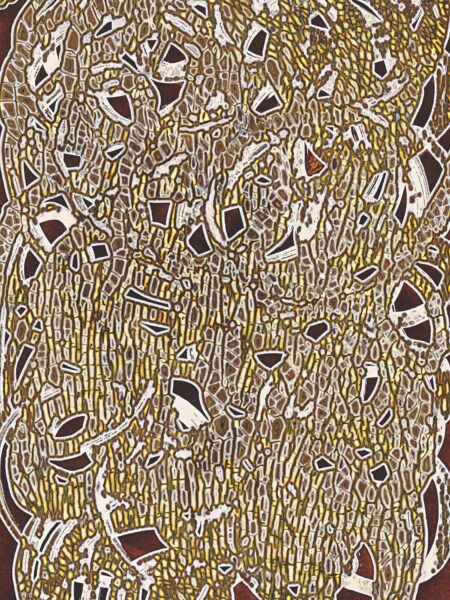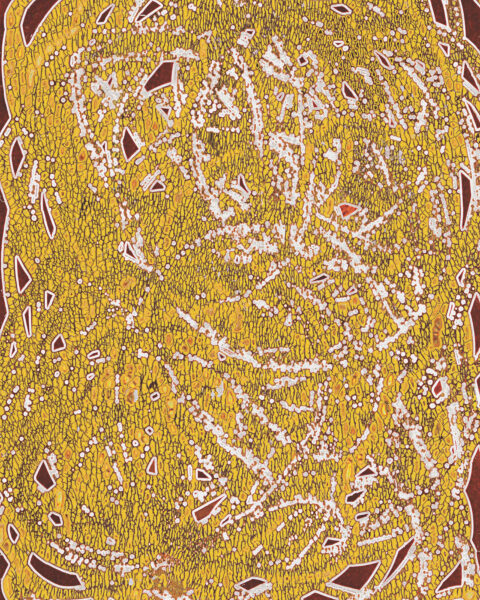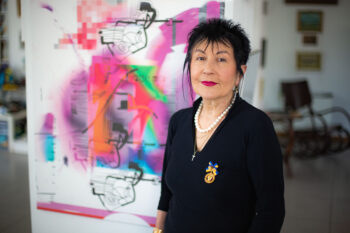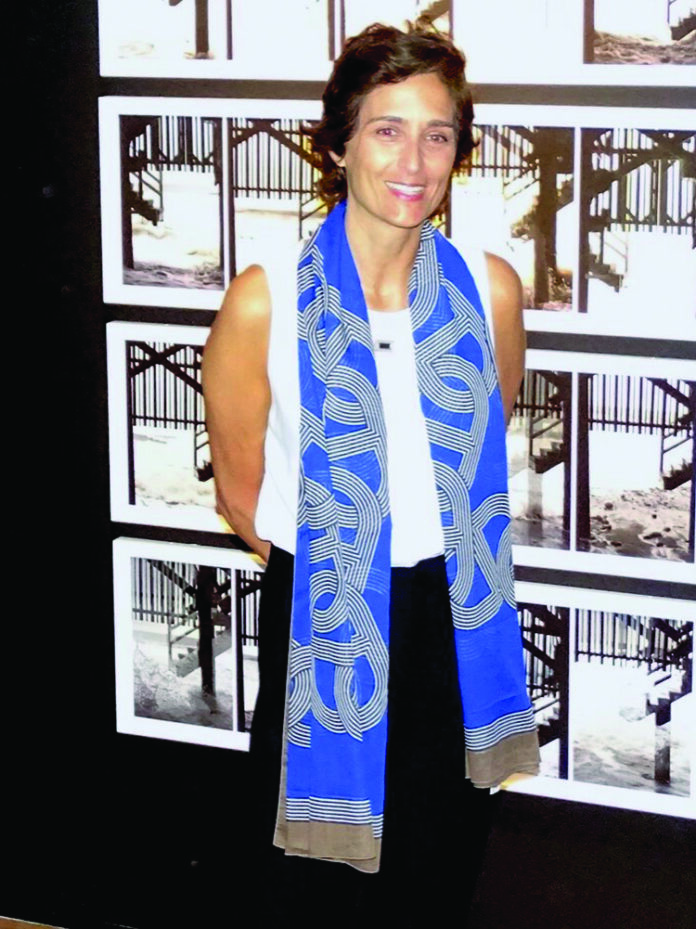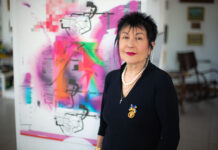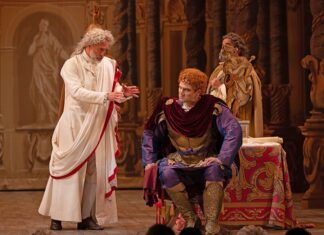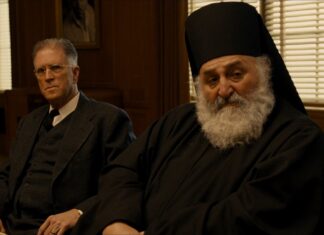LOS ANGELES — The ever-intriguing and talented photographer Alexandra Hedison opened her travelling show “A Brief Infinity” on April 22 at Von Lintel Gallery in Los Angeles. The polymath daughter of actor David Hedison (Albert Hedison Jr.) whose original family surname was Heditsian, she creates work that is both aesthetically pleasing and intellectually challenging.
“A Brief Infinity” comes to us from its previous incarnation at H Gallery in Paris, where it garnered glowing critical reviews. In this series of photographs, Hedison uses a rarely employed technique called chemigrams, pioneered by artists such as Maurice Tabard and Christian Schad, and by the Belgian artist Pierre Cordier who coined the term in the 1950s. Chemigrams do not require an initial image or photo to be developed. Instead, the images are produced in the darkroom by chemicals and light as they interact with black-and-white photographic paper, a form of painting with chemicals, if you will. Hedison uses clear packing tape, metallic paint, and varnish as “forms of resistance” before running the paper through the chemical wash. She then prints the images made by silver metallic paint initially meant to block the chemical process from occurring. Hence the photographer is unsure what colors and lines will appear once the work leaves the darkroom. Hedison’s use of chemigrams was initially a response to COVID-19 isolation in 2020: in the dark with only paper and chemical bath, the hidden/invisible gesture of the artist becomes part of the process itself. In doing so Hedison perhaps paradoxically reproduces the very essence of photography, which is to capture a moment, place and time that is as unique as it is arbitrary.
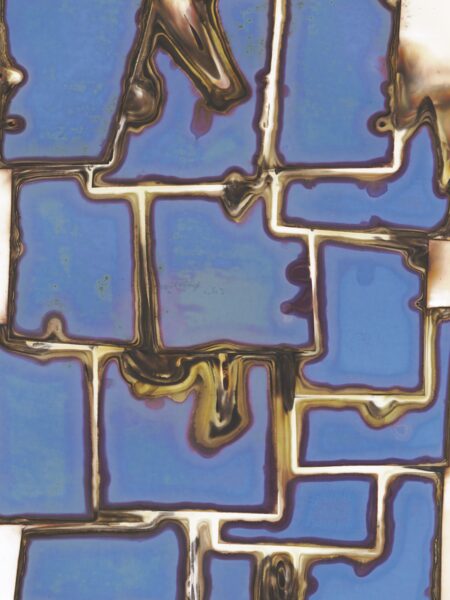
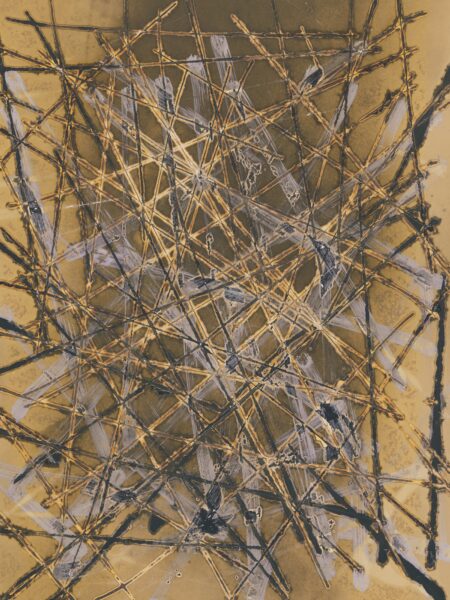
In the series at Von Lintel Gallery, one marvels at the amazing variety of colors, the alternation between curve (ABI_54) and straight edge (ABI_039). The dizzying, sheer number of shapes in the brown hued ABI-056 (think: batik on speed) make for a geometric delight, while the more modular, box-like configurations in ABI_22 and ABI_23 remind one of mitochondrial cells, even perhaps rectangular-shaped spider webs after rainfall. As Hedison states elsewhere: “My work is drawn from the in between, the unfolding experience between the knowable and uncertain. It is as brief as it is infinite.” It is the “in betweenness” that fascinates the viewer, in both time, shape and form. Hedison’s fixed process in time, a nanosecond when flux is arrested to produce unique forms and colors that even she cannot anticipate. In a sense this does away with the concept of the artist as God or almighty creator. “The element of chance in this process intrigued me and kept me fascinated,” Hedison averred in a recent discussion, before going on to explain that “without the instrumentality of the camera, art making in the darkroom has been both a self-discovery and self-creation — a way for me to enter into the unknown and attempt to articulate the unfamiliar.”
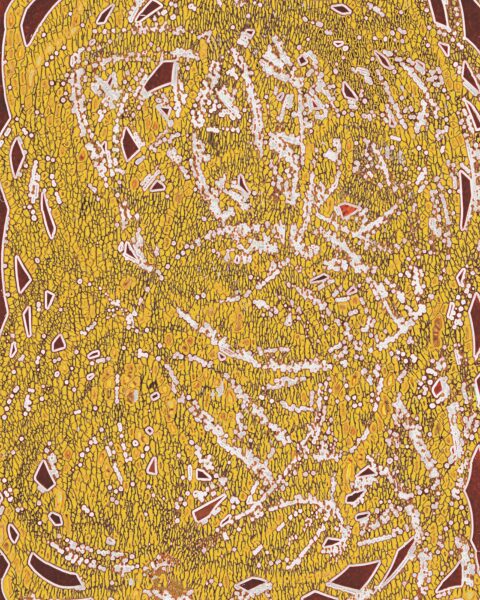
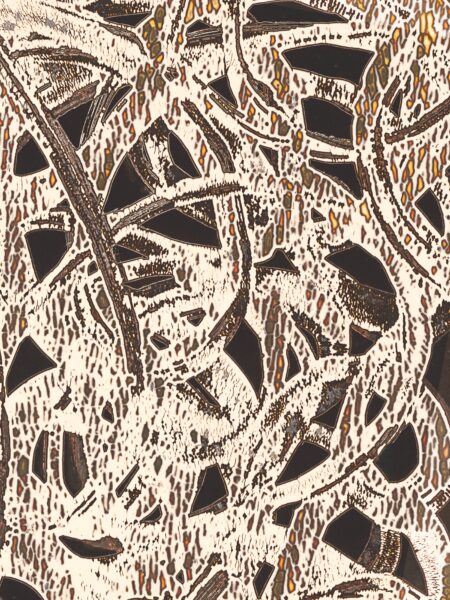
The chemigram process also lends a cinematic quality to the work, since film is essentially the juxtaposition of images in time, filtered quickly one after the other to simulate real movement. ABI_022 and ABI_023, processed on metallic gloss paper, possess an almost stained-glass quality and beautifully soothing hues of sky blue and darker, aquamarine backgrounds. the metallic pink and the crisscrossing plank-like forms in ABI_16 create a geography of shapes and color that seem to almost move or thrust outward. Both the in-between cream-colored spaces and the superimposed pink, blue and black shapes form similar overlapping triangular and rectangular forms, calling into question the notion of the border or limit.
Another favorite, the series of ABI _053, ABI_055 and ABI_007 whose mainly brown, yellow overflow with hundreds of tiny circular and oval forms that remind one of minute moving particles or cells dividing and recombining under a microscope.
The play on the liminal, the in-between, rejoins her previous 2017 series “The In Between.” Here Hedison photographed Parisian storefronts that were in the process of being replaced by new stores/facades. The painted facades put up during this “in-between” period act as “pretend” windows and building facades, or what Hedison cleverly calls “found paintings.” The question then becomes what moment the photographer has caught, if not a liminal space between viewer, window and what really lie inside, as construction workers continually shift the image seen from the outside. Going farther back in time, even her lush, exquisite 2008 ”Ithaka” anticipates her present theoretical concerns. Inspired by the Cavafy poem of the same title, these shots of North American rainforests problematize the spaces in between foliage and bark. Here both the empty spaces, and the greenery that outline these spaces are captured by her lens, anticipating the random unicity of the infinite.
